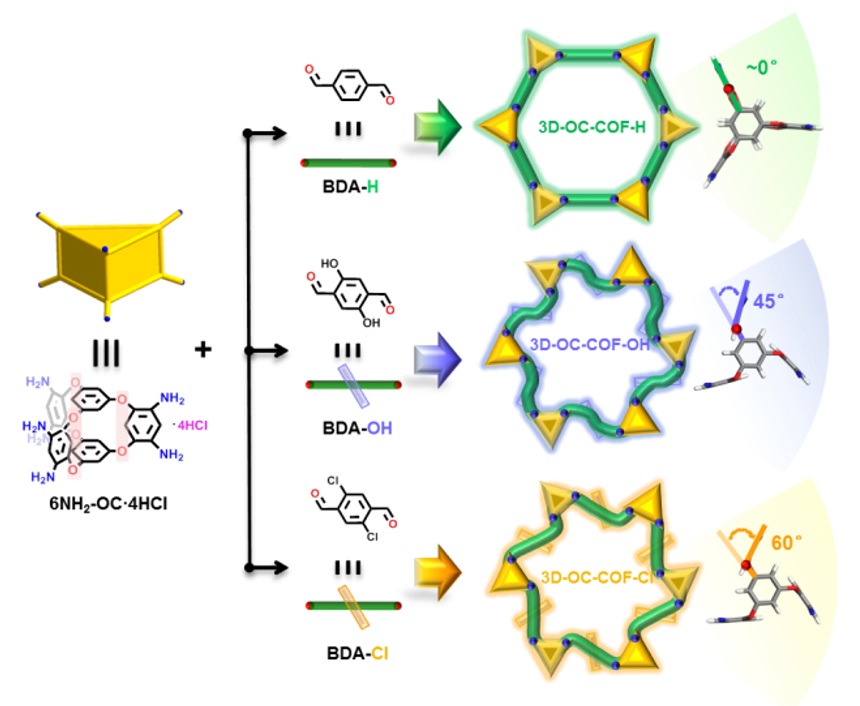Covalent organic frameworks (COFs) are a growing class of crystalline porous materials that have garnered extensive interest for their auspicious employments in numerous applications, including gas adsorption and separation, heterogeneous catalysis, energy storage, chemical sensing, and so on.
In the past decades, most reported well-defined and predictable 3D-COFs have concentrated on various rigid building blocks. On the contrary, constructing and determining 3D-COFs with flexible building blocks to further explore their distinctive tunable or dynamic behavior has obtained relatively less attention.
In a study published in CCSChemistry, a research group led by Prof. YUAN Daqiang from Fujian Institute of Research on the Structure of Matter of the Chinese Academy of Sciences reported the structural diversity of 3D-COFs with flexible building blocks by introducing different substituted ligands.
The researchers designed and synthesized an amino-functionalized covalent organic cage (OC) named 6NH2-OC?4HCl, exhibiting C-O single bonds in its backbone and D3h-symmetric conformation. Hinge-like motions of oxygen-bridged phenyls could be intuitively observed from single-crystal structures of a series of molecular units (Im-6NH2-OCs), which were synthesized by condensation with different benzaldehyde monomers.
They then synthesized the corresponding three isostructural 3D-OC-COFs through the in-situ acid-base neutralization strategy. Interestingly, network conformations could be fine-tuned by rationally introducing different substituents into the starting dialdehydes during the assembly process, resulting in one expanded structure (3D-OC-COF-H) and two different contracted structures (3D-OC-COF-OH and 3D-OC-COF-Cl), which mainly ascribed to the hinge-like motions of organic cage building blocks.
Taking advantage of the unique pore environments and different functional groups, the researchers employed these COFs for CO2 capture, of which 3D-OC-COF-OH exhibited superior CO2/CH4 separation performance.
This study not only demonstrates a new strategy for constructing 3D cage-based COFs, but also identifies a novel factor that affects flexible building blocks for realizing structural diversity.

Schematic representation of the systematic construction of 3D-OC-COFs (Image by Prof. YUAN’s Group)
Contact:
Prof. YUAN Daqiang
Fujian Institute of Research on the Structure of Matter
Chinese Academy of Sciences
Email: ydq@fjirsm.ac.cn